It is the winter season again, and the first thing to do is find warm clothing and accessories. We have always heard stories about our mother’s and grandmother’s heirloom shawls which they passed down for generations. Shawls have always been special to our parents and grandparents, and on the arrival of winter, they say that they celebrated the season, and wore their shawls delightfully. If you wonder why to know that Kashmiri shawls are actually something to celebrate!
Kashmiri shawls are timeless accessories and a companion of a lifetime for the owner. These have survived the test of time owing to the meticulous techniques that are put into practice during their making. And while there are myriads of shawl designs and patterns, it is a Kashmiri shawl that stands out and whose beauty never fades away.
The basic purpose of a shawl is to keep you warm. Kashmiri shawls, handcrafted out of Cashmere, are 8 times warmer than sheep wool shawls. This property makes them the most preferred shawls amongst their counterparts. After all, it is warmth and comfort that one prefers over everything when it comes to colder seasons.
What is a Kashmiri Shawl?
Originating from the lush valleys of Kashmir, a Kashmiri shawl is a representation of unmatched artistry. Traditionally fashioned from the finest Pashmina or Cashmere wool, hand-spun by expert artisans, this shawl is revered for its luscious feel and delicate workmanship. The source material is the undercoat of Changthangi goats, which are indigenous to Ladakh's high altitudes. Shawls made from these fibers—which are prized for their extraordinary warmth and softness—are both delicate and long-lasting thanks to the careful weaving process. Kashmiri shawls are renowned for its exquisite hand stitching, which is generally adorned with natural motif designs such as florals, vines, and paisleys, giving each piece an individual charm.
The centuries-old craft of weaving and embroidering Kashmiri shawls has been handed down through the generations. The care and attention to detail required to create these works of art are reflected in techniques like the Kani weave, which is performed on wooden looms using small sticks, or the Sozni embroidery, in which artists sew elaborate designs into the fabric. The intricate artistry that turns the delicate Cashmere threads into wearable art is displayed in each shawl, which takes months or even years to finish. Due to their elegance and cultural significance, these shawls are still highly prized by royalty and nobility, as they were in the past. They are also well recognized today.
A Kashmiri shawl symbolizes the region's rich cultural legacy in addition to its aesthetic and tactile appeal. Since these shawls have been an essential part of Kashmiri culture for generations, owning one is like clutching a piece of history. They tell tales of tradition, artistry, and resiliency and are much more than simply opulent clothing. The Kashmiri shawl is still a classic piece of clothing today, valued for its beauty, coziness, and heritage while also representing the richness of its past and its significance in the contemporary world.
Why are Kashmiri shawls the best?
There are not just one or two reasons why one should invest in Kashmiri shawls. In fact, one runs out of reasons to buy Kashmiri shawls. Here we have listed just five of them, which seem to be the most important ones.
Kashmiri shawls are warmer
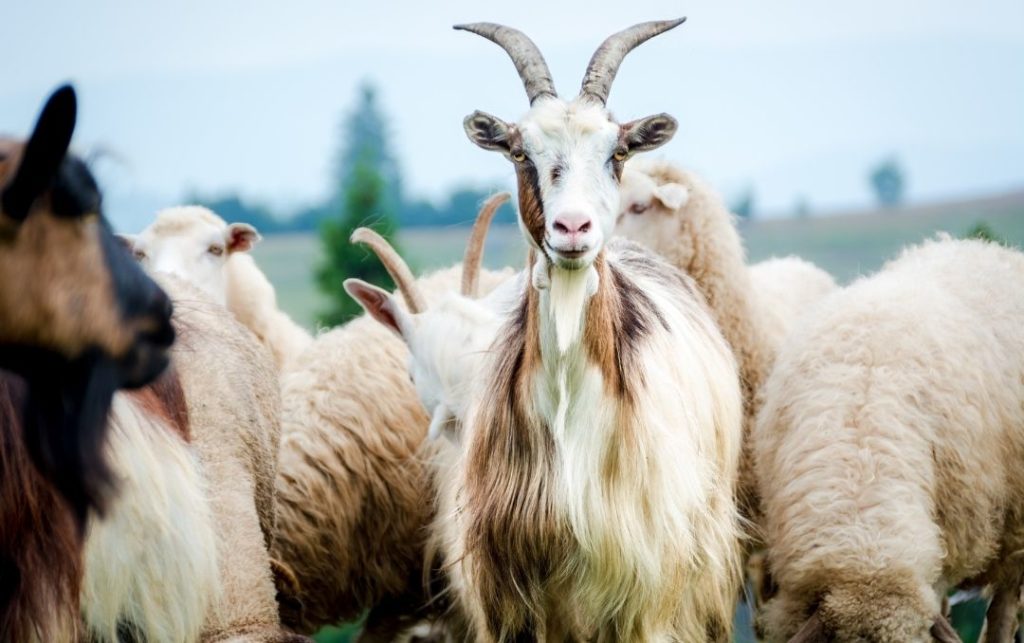
Kashmiri shawls are 8 times warmer than ordinary sheep wool shawls. This is because these are made from fine Cashmere that is found in Ladakh. A rare Ladakhi goat grows Cashmere as an undercoat over its body to survive a severe temperature of -40 degrees C. This nature’s defense bestowed upon the goat is a soft, fine, and exceptionally warm fleece that keeps it comfortable during winter. In the moulting period, its herders gently comb out this fleece and free the goat from its warmth, which is discomforting in summer. The fleece is processed - spun and woven - and this gives birth to Kashmiri shawls. Kashmiri shawls are also called Pashmina shawls, as the fleece of the goat is locally called Pashm.
Kashmiri Shawls are lightweight
The shawls made from Cashmere are exceptionally lightweight. A large-sized shawl (100*200 cms) weighs just around 450 grams. Being lightweight makes it more cherished, as thick and heavy winter layers make one feel burdened and uneasy.
A lightweight wrap like a Kashmiri shawl is easy to carry when you are traveling. It can be folded and stored in a handbag if the weather conditions demand it. Also, being lightweight makes it to be patterned into any style. One can fold it into a strip, and wrap it around the neck as a substitute for a scarf.
The Soft and Smooth Shawls
Kashmiri shawls are immensely soft and smooth to the touch. No one has ever complained of itching or allergy caused by Kashmiri shawls (except the super sensitive ones who get allergies from all kinds of natural fabrics). The fabric is super fluffy to touch and feel, owing to the fineness of Cashmere, and the traditional methods used to manufacture these. This is the experience one can only get with a handmade product.
Timeless and Lifelong Companions
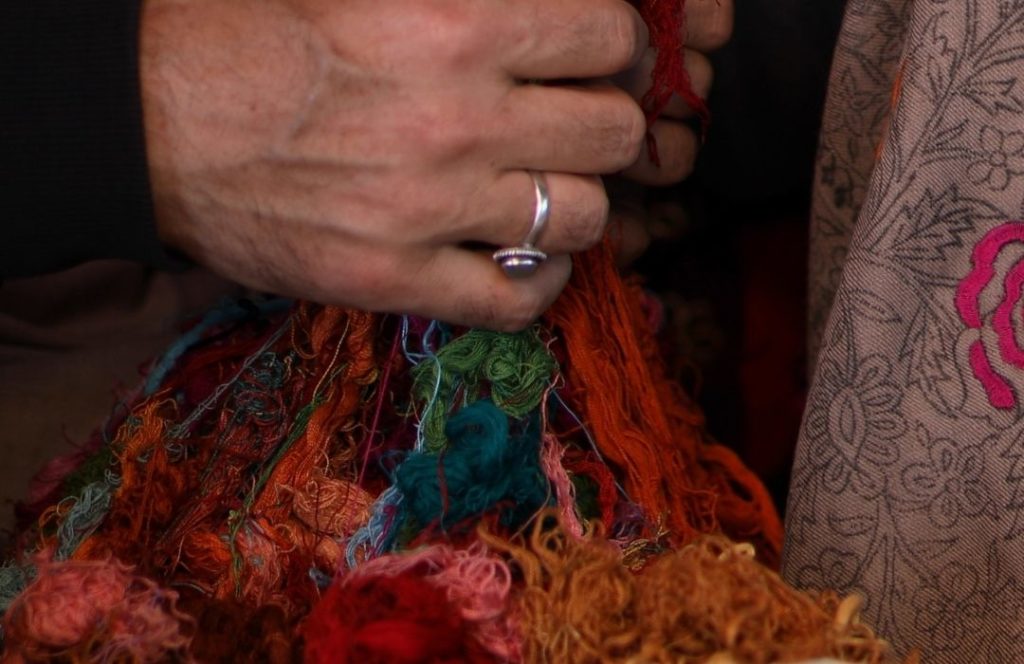
The timelessness of Kashmiri shawls needs no narrative. The shawls made from the purest threads of Cashmere wool are a lifetime companion, and stay beautiful for over 30 years. With age, the shawls acquire an heirloom look and look even more vintage than a freshly handcrafted one. For this reason, these can be passed from one generation to the other.
These luxury Shawls are handmade
Kashmiri shawls need no mechanical assistance. It is just the utmost skill and creative craftsmanship of the artisans which makes these shawls immensely graceful and rare. Being handmade makes them special and hence one can gift these to their most beloved.
How are Kashmiri Shawls crafted?
Acquiring fine Rooted in the rough terrain of Ladakh, the production of Ladakhi Cashmere is a painstaking and labor-intensive procedure. Commencing the voyage are the endangered Changthangi goats, which flourish in the harsh, frigid climate of the Himalayan peaks at elevations over 14,000 feet. These goats grow pashm, the incredibly soft undercoat that gives Ladakhi Cashmere its name, in order to withstand the harsh winters. Herders gather this exquisite downy fleece from the goats by hand in the early spring, taking care not to hurt the animals. Ladakhi Cashmere is among the best in the world because of the fibers' exceptional softness, warmth, and light weight.
The raw wool is thoroughly sorted once it is obtained in order to separate the finer from coarser fibers. Ladakhi Cashmere feels opulent since only fibers with a diameter of less than 16 microns are regarded as the finest. After that, the inherent softness and strength of these delicate fibers are preserved by hand spinning and cleaning. Ladakhi Cashmere is frequently woven into shawls, scarves, and other opulent clothing items, all of which showcase the material's uniqueness and purity.
Sustainable and moral business practices are closely linked to the acquisition of Ladakhi Cashmere. This age-old practice has been refined over centuries by the goats' nomadic herders, who keep a respectful balance with the natural world. The restricted supply of Ladakhi Cashmere, in contrast to mass-produced wool, guarantees that every item stays unique and genuine, reflecting the rough beauty of the area as well as the high-altitude workmanship.
5 Kashmiri shawls to pick this winter
With so much said about the Kashmiri shawls, let us see what type of shawls are the best to buy for the winter season.
Kani Jamawar Shawls
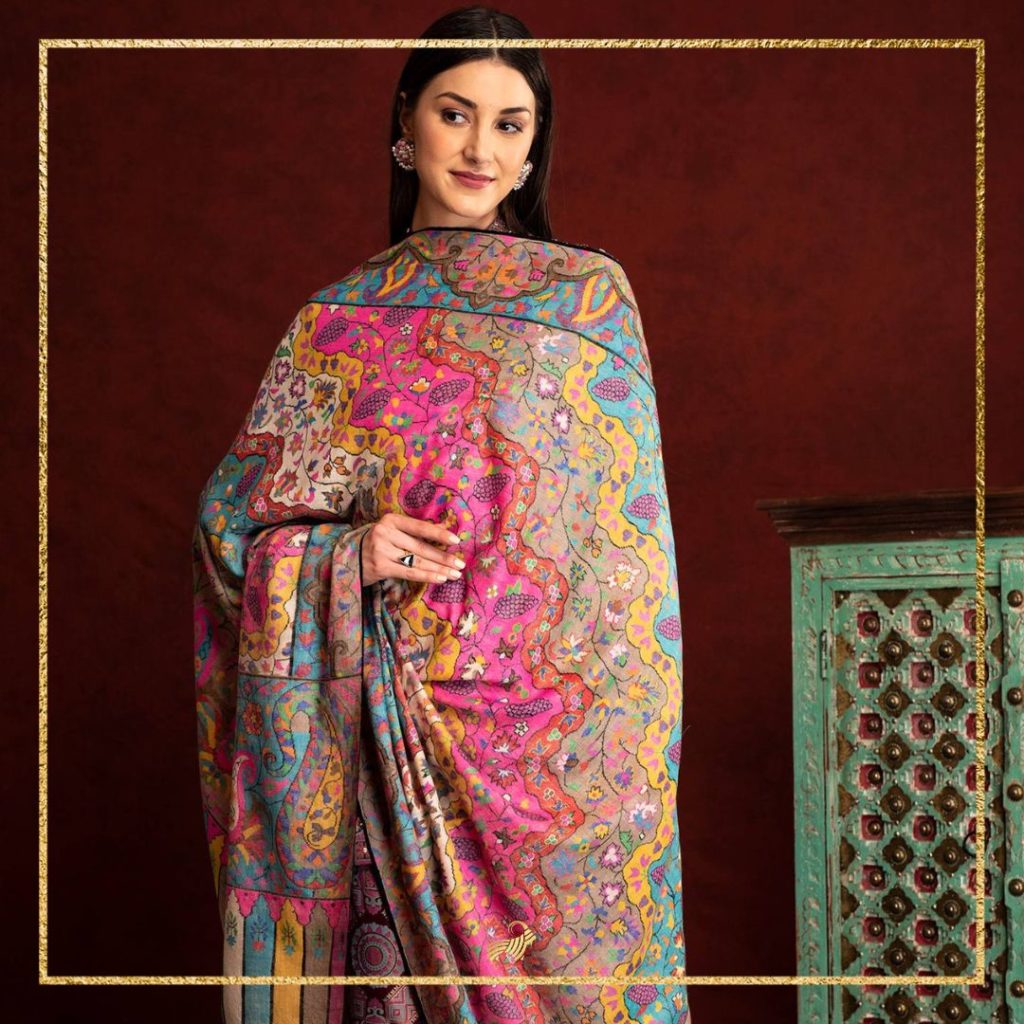
Kani shawls are one of the most elaborate, exquisite, and elegant shawls in Kashmir. These are made from fine Ladakhi Cashmere wool, which is handspun into fine yarn. The yarn is then taken as a warp, and the wefts are colourful threads that intersect with the warp threads during weaving. Thus, motifs in brilliant shades are created over the base, and the shawl takes 3 to 4 years to complete. Jamawar refers to a pattern where the shawls are full of embellishments.
Famous for their elaborate designs and historical significance, Kani Jamawar shawls are exquisite examples of Kashmiri weaving. The hamlet of Kanihama is the birthplace of the Kani weaving technique, which entails delicately weaving colorful patterns into the cloth using tiny wooden sticks, or "kanis," in place of conventional shuttles. Inspired by the verdant landscapes of Kashmir, these shawls, which are generally made from the finest Pashmina or Cashmere wool, contain intricate paisley and floral motifs. Because of the intricate designs and high level of expertise needed to weave them, each Kani Jamawar shawl is a work of patience and talent that can take months or even years to complete.
Kani Jamawar shawls were once highly prized by nobles and kings, and they still have an air of exclusivity and luxury about them now. The traditional shawls with exquisite motifs that resemble tapestries and were intended for royal courts are referred to as "Jamawar." A Kani Jamawar shawl is akin to wrapping oneself in a piece of history, with each strand narrating a tale of skill, tradition, and classic style. These shawls are not only fashionable pieces but also priceless pieces of art due to their brilliant patterns, superb weaving, and plush texture.
Embroidered Jamawar Shawls

Kashmiri shawls made from Cashmere wool can be hand embroidered profusely. Jamawar shawls that host hand embroidery motifs all over the base are called embroidered jamawar shawls. These shawls host the embroidery in such a way that the base of the shawl is barely visible. These shawls are ideal for formal occasions, weddings, or as gifts to your loved ones.
The height of luxury is achieved by hand-weaved fabric richness combined with exquisite embroidery on Jamawar shawls, which raises the level of creativity to unprecedented levels. Traditionally made from the finest wool, either Pashmina or Cashmere, these shawls have intricate motifs that are expertly embroidered by needleworkers. Beautifully stitched with fine threads of silk, zari, or even gold and silver, the motifs, which are frequently inspired by nature, include flower patterns, paisleys, and vine-like scrolls.
The embroidery adds texture and depth to the shawl, transforming it into a canvas of vibrant colors and intricate patterns. Historically favored by royalty, these shawls have a timeless appeal, blending traditional craftsmanship with modern elegance. Whether draped over the shoulders or used as a statement piece, an embroidered Jamawar shawl brings an air of regal sophistication to any ensemble. Beyond fashion, these shawls are a symbol of cultural heritage, embodying the skill, patience, and creativity of the artisans who pour their soul into every stitch.
Reversible Pashmina shawls
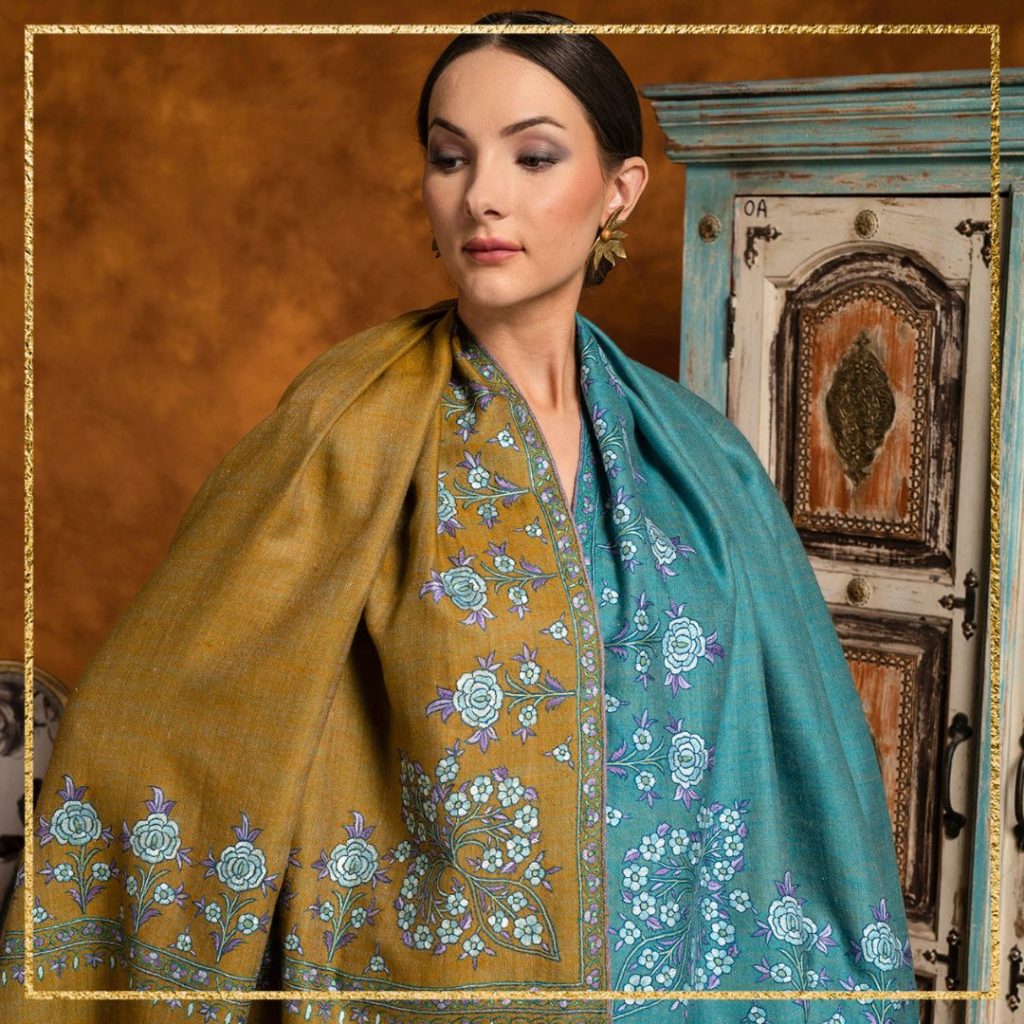
A magically handcrafted shawl is the reversible Pashmina shawl from Kashmir. The shawl is handwoven in such a way that it has no backside. Both sides of the shawl are equally beautiful and hence the shawl can be worn from both sides. Reversible shawls can be either two different colours on two sides or anembroidered reversible shawl where the opposite side is a mirror image of the front side. These are known as Aksi Do Rukha shawls and are the most expensive category in hand-embroidered shawls.
Reversible Pashmina shawls, which combine luxury and versatility in one item, are a marvel of textile craftsmanship. These exquisite Cashmere wool shawls, which feature two unique designs on either side, enable the wearer to alternate between patterns and colors to fit various moods or situations. These shawls are reversible, which doubles their elegance. Each side is expertly created to be just as beautiful as the other. These shawls, with their exquisite paisleys, floral designs, or geometric patterns, are a flexible addition to any outfit since they allow for an easy transition between various styles.
The intricacy of its construction is what sets reversible Pashmina shawls out from the ordinary. By employing double-sided weaving techniques, talented weavers may guarantee that the shawl's pattern is consistent on both sides without sacrificing any detail or quality. Time, accuracy, and superb craftsmanship are required for this procedure to produce a shawl that is sumptuous, light, and offers two lovely possibilities in one. Reversible Pashmina shawls are not only useful, but also classic, representing the refinement and grace for which Pashmina has been known for generations.
Modern Design Pashmina Shawls
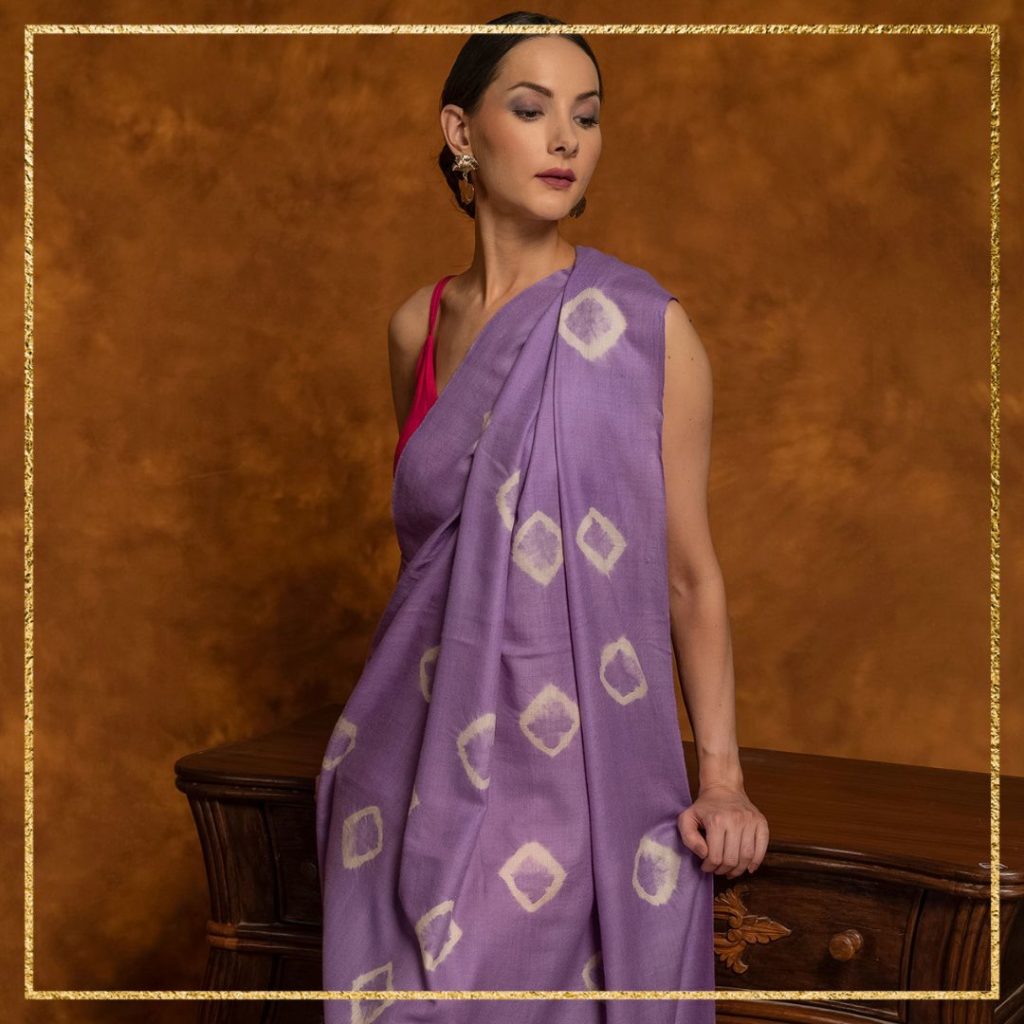
Kashmiri shawls have adapted to the modern world and its trends. Hence, not just traditionally embroidered shawls, but Kashmiri shawls have prints and patterns. Striped Pashmina shawls, shibori Pashmina shawls, chequered patterns, houndstooth shawls, and many more fresh trends can be seen featuring on Kashmiri shawls now.
The time-tested technique of Kashmiri handicraft is given a modern, innovative twist by pashmina shawls. These wraps have bright, inventive designs that appeal to modern fashion sensibilities, yet they still have the opulent warmth and softness of traditional Pashmina. The sleek contemporary appeal is provided by the weaving or printing of geometric patterns, abstract motifs, and minimalist aesthetics onto the cloth. These wraps are a flexible piece of clothing that go well with both traditional and modern outfits since they so skillfully combine the old and the new. For the fashion-forward person who appreciates timeless quality, the end result is a piece that seems both avant-garde and classic.
Pashmina shawls' rich history is not compromised when contemporary design elements are added; on the contrary, the shawl's importance in the fast-paced world of fashion today is increased. By experimenting with bold color schemes, asymmetrical patterns, and digital printing, Shibori Pashmina, designers enable the age-old Pashmina craft to develop while adhering to its historical traditions. These shawls give fashionistas a means to embrace heritage while expressing their uniqueness, serving as both a mark of luxury and a reflection of modern tastes. Modern Pashmina shawls are the ideal fusion of traditional workmanship and innovative design, whether they are worn casually or as a statement item.
Also read: PASHMINA SHAWLS TO ADORN ON ANY OCCASION
The Minimalist Solid Shawls
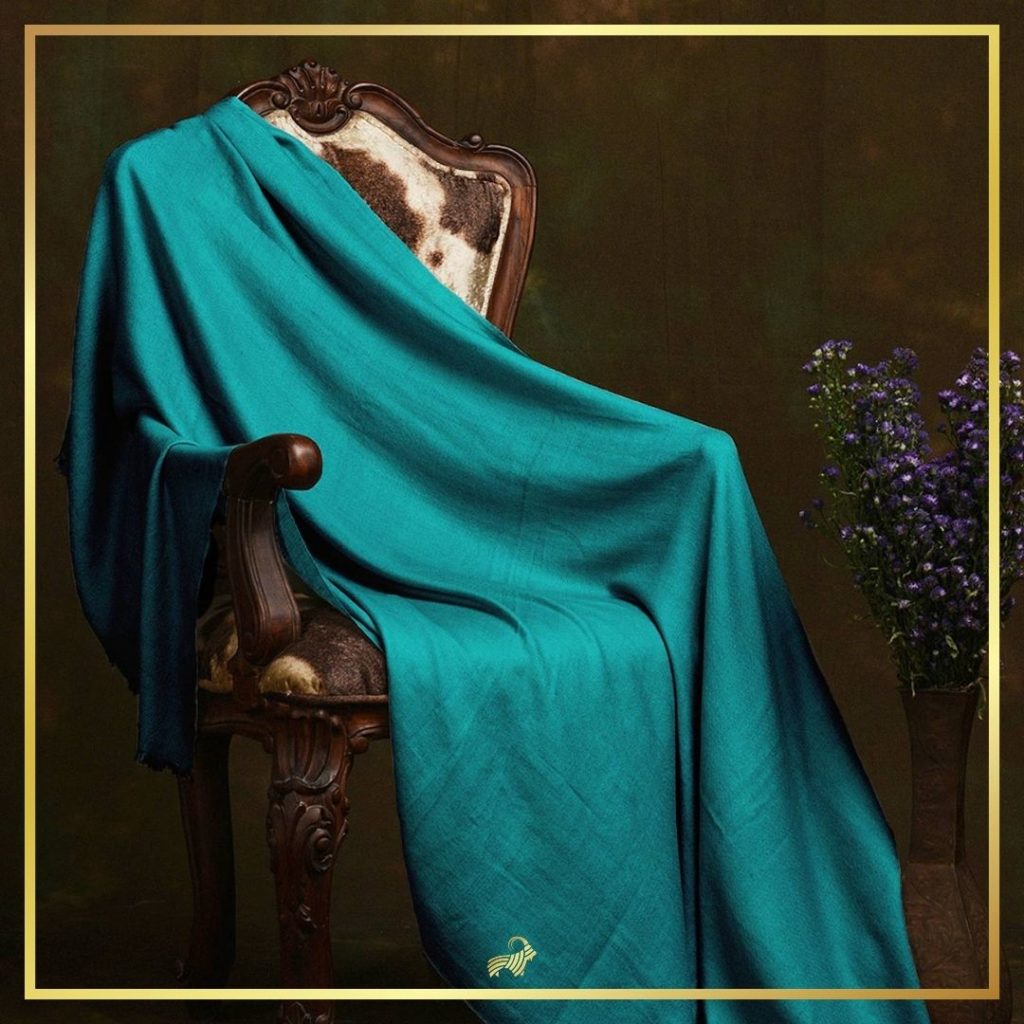
As evergreen and ageless as they can be, solid Kashmiri shawls are no less graceful than any of them. With different weave types, which embellish the plain base, many women like their shawls plain. The shawls are naturally coloured grey, brown, ash, white or black. But with time, since Pashmina shawls take dyes seamlessly, they can be seen in any colour or shade. Brilliant as well as pastel shades conquer the shawl and make them more alluring to the eyes.
Simple, unadorned solid shawls that emphasize shape and texture over elaborate patterns or embellishments are the epitome of minimalist beauty. Made from the finest Cashmere wool, these shawls highlight the inherent beauty of the fabric with a single, understated color that draws attention to its plush, velvety feel. These shawls are classic and adaptable because of their simple design, which highlights the extraordinary quality of the material. Solid shawls give off a polished, elegant appearance that goes well with any ensemble, whether they are in earthy browns, deep maroon, or other bolder hues like ivory, charcoal, or emerald.
Kashmiri Shawls and Sustainable Fashion
Be it any pattern or design, the main attraction of a Kashmiri shawl is its purity. Whatever design, embroidery, or embellishment, it is Pashmina shawls that allure the onlookers on a different level. Pure Kashmiri shawls are hard to find, yet when you find them, you realize what you have been missing out on.
The pinnacle of environmentally friendly fashion, Kashmiri shawls are made from natural materials and ethical methods. These shawls, which are often woven from Cashmere or Pashmina wool, are created from the undercoat of Himalayan goats, which is combed rather than shorn to prevent injury to the goats. The gradual, conscientious harvesting process that prioritizes quality over quantity and environmental consciousness is in line with the ideas of sustainable fashion. Kashmiri shawls, which are frequently made by regional artists, honor the handicrafting customs that have been passed down through the years, strengthening ties to the area's rich cultural legacy and encouraging more environmentally friendly design.
The labor-intensive and long manufacturing method used to produce Kashmiri shawls embodies the principles of slow fashion. From hand-spinning the soft wool to weaving and embroidering elaborate motifs, each shawl is expertly made. In addition to guaranteeing the preservation of traditional methods, the manufacturing of these shawls empowers the local communities economically by promoting local artists. Kashmiri shawls, in contrast to mass-produced clothing, are made to last a lifetime and represent the philosophy of "buy less, buy better" since they are classic, sophisticated items that outlive fads and seasonal trends.
Also read: 5 EXCLUSIVE STYLES OF MEN'S PASHMINA SHAWLS